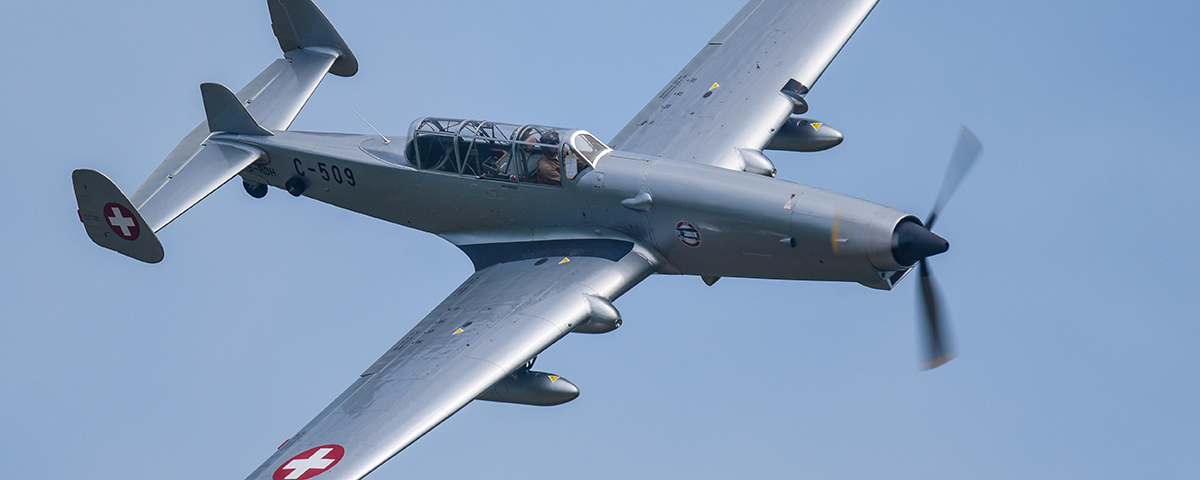Can you identify this multi-use combat airplane? (click the arrow for the answer)
Ferner Werke C-3605 “Alpine Anteater”
Originally conceived in 1934 by the Swiss Federal Construction Workshop as a general-purpose warplane combining the roles of fighter, reconnaissance and tactical support, the C-36 two-seat monoplane lost out to a biplane design, the C-35, but was revived for testing in 1939 and went into production in 1942 as the EKW C-3603.
Powered by a 1,000-hp Hispano 12Y-51 12-cylinder water-cooled engine, it had a maximum speed of 246 mph and a range of 422 miles. Armed with a 20mm cannon firing through the propeller, two 7.5mm machine guns in the wings and one or two in the observer’s position as well as bombs, the C-3603 spent much of World War II patrolling Swiss airspace and shepherding any Allied or Axis aircraft it encountered to the nearest airfield for internment. Modifications had to be made to address wartime shortages in high-octane gasoline by adapting the engine to synthetic K fuel in the C-3603-1, but the airplane’s greatest asset was its ability to withstand the rigors of flight above the Alps and through valleys, where air turbulence put a constant strain on the airframe.
The end of WWII and the dawn of the jet age plunged the C-3603-1 into instant obsolescence. Half of the 150 aircraft built were scrapped in 1945, but the rest were employed as target tugs. By 1953 there were 60 C-3603s still engaged in that duty. In the mid-1960s their robust airframes were showing no sign of giving out, so Jean-Pierre Weibel of the Federal Aircraft Factory’s Structures Department proposed a radical change of power plant to keep them flying.
In September 1967 work began on converting the C-3603 to use a 1,150-hp Avco Lycoming T53-L-7 turboprop. At 555 pounds, that engine weighed half as much as the Hispano, requiring extension of the nose to compensate for what would otherwise have been a serious change in the center of gravity. Wingspan was still 44 feet 1 inch, but with the fuselage length increased from 31 feet 7 inches to 39 feet 5 inches—the nose being almost as far ahead of the wing as the tail was behind it—the tug’s side silhouette earned it the nickname “Alpine Aardvark.” Surprisingly, its performance and handling were excellent. Evaluated in December 1968, it could reach 268 mph at 10,000 feet, and the only remaining modification required was to add a small vertical stabilizer to the tail. Conversion work on 23 airframes took place from 1971 to 1973, and all of the Farner Werke C-3605s, as they were then designated, were still serving in 1978.
In the mid-1980s, a rash of forced landings led to the discovery that the C-3605s’ turboprop engines were wearing out faster than the airframes. At that point, however, the Swiss judged it more economical to replace the C-3605 with a newer airplane, the Pilatus PC-9. In April 1987, the C-3605s flew their last missions. One survives at the Swiss Air Force Museum at Dübendorf, as does one of the older C-3603s. A second C-3603 resides at the Swiss Transport Museum in Lucerne and a second C-3605 at the Planes of Fame Museum in Chino, Calif. At least two other C-3605s are known to be in private hands.
Originally published in Aviation History magazine in November 2018.





